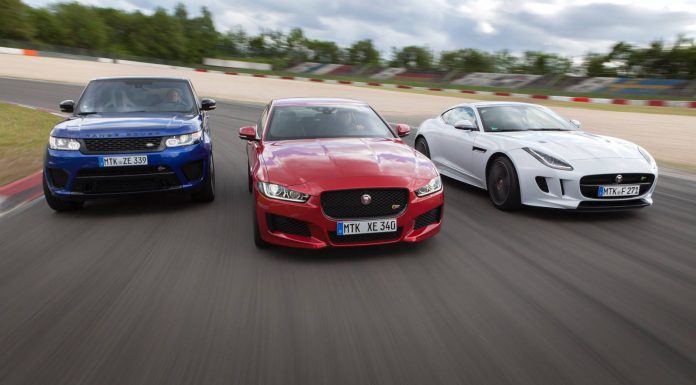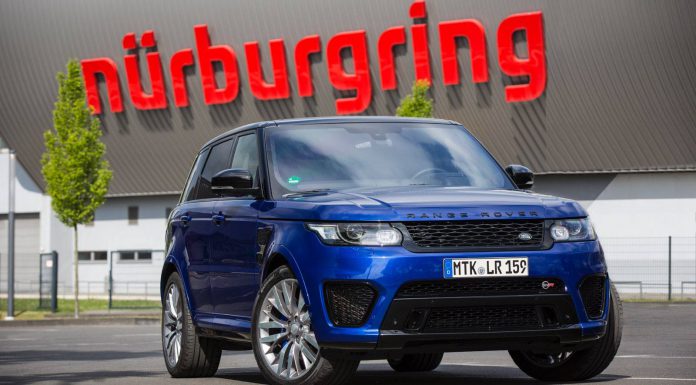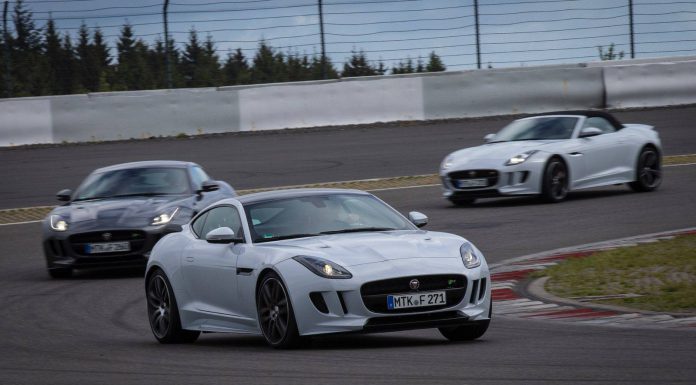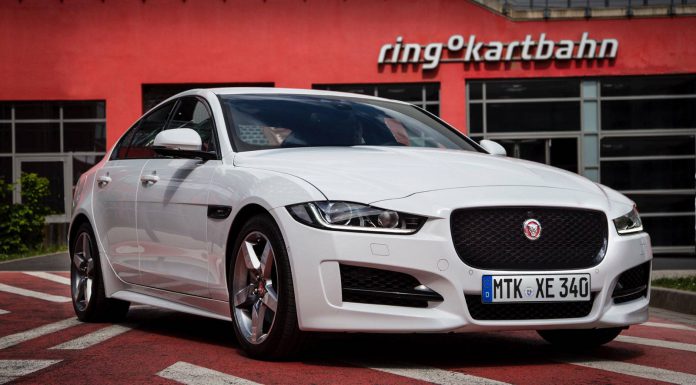We were recently invited by Jaguar Land Rover to join one of their Nurburgring events in Germany. Jaguar are one of a handful of manufacturers to maintain a facility at the legendary race track. The event gave us the welcome opportunity for a first drive of a number of cars, notably the Jaguar XE and the Range Rover Sport SVR, two of the newest Jaguar Land Rover offerings.
Jaguar is enjoying a resurgence in recent times. It sold 470,000 cars worldwide last year, 20,000 of those were sold in Germany. A further 10 billion euros is earmarked for investment into research and development over the next three years. We were told to expect a further 50 new products up to 2020, on top of the 40 we’ve already seen since 2012. Jaguar is looking to challenge the German’s.
Jaguar had arranged for us to drive the Nurburgring GP track rather than the legendary Nordschleife. The GP track was built in 1984 as an addition to the historic Norschleife. Nowadays, most of the racing takes place on this circuit and it has become a classic amongst the drivers. With the F-Type R Coupe AWD and the Range Rover Sport SVR first on our list, the GP track was probably the safer place to be!
Range Rover Sport SVR
First up for us was the Range Rover Sport SVR. A fantastic looking machine, the Range Rover Sport SVR blends the uprated Jaguar Land Rover 5.0 litre V8 with an upright, SUV package for the very first time. What we get as a result is an outrageous SUV with enough power and performance to outrun cars half its size. In fact, the SVR is the first Land Rover product of Jaguar Land Rover’s Special Vehicle Operations (SVO) division, it is is Land Rover’s fastest ever!
Out on track, the Range Rover Sport looked really stunning. Although it has the obvious trappings of an SUV, it was genuinely quick through the corners. A massive 400 kg weight loss program is the obvious cause. It is the fastest car Land Rover have ever produced, with a proven Nordschliefe time of 8:14 minutes.
The idea of a high-performance SUV isn’t a new one. Land Rover’s rivals have been producing rival products for quite some time now. The most important example is the Porsche Cayenne Turbo and Turbo S, but we have also had the Mercedes-Benz ML 63 AMG and the BMW X5 M. All three are entering their second product life cycle. The SVR is a latecomer to the niche.
It is surreal watching the Range Rover Sport SVR working its way around the track. The sound is of course incredible, thanks to the supercharged 550 hp V8. To help make the SVR as quick as possible, there are new electronic controls for the eight-speed automatic transmission and revised settings for the electronic locking rear differential.
Land Rover’s traditional go-anywhere ability has not been lost either. The SVR gets an electronic locking differential on the front axle and a clutch-based centre differential as well as low-range and the Terrain Response 2 traction control system. The ride height also remains unchanged, it gains firmer bushes and new pistons for the air springs but could still handle the rough stuff if you so desired.
In all, we loved our introduction to the SVR. We can’t wait to get some more time behind the wheel.
Jaguar F-Type Coupe AWD
Next up was the Jaguar F-Type R Coupe AWD. Given the demand for four-wheel drive in todays market, the F-Type was always going to get this option. The car we drove was a 2016 car with a few options from the extended option range. 30% of F-Types come fitted with the four-wheel drive system. For the V8, that figure is as high as 50%.
Unfortunately, the four-wheel drive system isn’t available with the new manual gearbox. However, it does still feature Jaguar’s torque vectoring system which aids in providing traction to all for wheels. Coupled with the four-wheel drive system, the F-Type is easier to control than ever before.
You can tell the F-Type AWD apart from other F-Types due to its bonnet bulge. Powertrain revisions were necessary to shoehorn the four-wheel drive system into the British sports car. The changes mean that both the Coupe and the Convertible weigh about 80kg more than their rear-wheel drive counterparts.
The F-Type R AWD feels stable and solid on track. Some will prefer this feeling over the less sure-footed F-Type R Coupe. This is of course mostly down to personal preference than anything else, both are fantastic drivers cars. We didn’t notice the new electronic steering system much either, which seems to suggest it does its job extremely well!
After our spell in the F-Type, we got back behind the wheel of the Range Rover Sport SVR once again. Seeing the difference between the two was very interesting. Both share the same engine, but feel like polar opposites. The F-Type Coupe is obviously more suited to the race track than its larger stablemate.
Jaguar XE
In the afternoon we got our first taste of the Jaguar XE, Jaguar’s rival for the German compact premium sedans; the A4, 3-Series and C-Class. Our first taste was a diesel unit. It did the job although it obviously doesn’t belong on a race track. It will likely feel more at home on the autobahn, eating the miles and returning excellent efficiency ratings.
The Jaguar XE utilises Jaguars aluminium expertise. 75 % of the chassis is aluminium and weighs just 251 kg’s as a result. Jaguar are also offering a new range of 4 cylinder engines which offer economy figures as low as 3.8 litres per kilometre. The entire race will feature 5 models and 7 engines with 160 options.
The interior is also of interest, The GPS system is all-new, although it looks a little dated already and our first impressions of the touch screen were that it was a little difficult to use. The same system is now available in the flagship F-Type too, overall it is a marked improvement to the outgoing system. We will need to conduct further comprehensive testing to come to a definitive conclusion; the Nurburging GP track isn’t quite the definitive test environment this sort of testing requires!
Moving into the Jaguar XE S afterwards, we had a lot more fun. The gearbox works great and the dynamic mode option serves to improve the steering and suspension characteristics. The XE S is what demonstrates the capabilities of the XE range in the best possible way. Owners will purchase it for its outstanding driving dynamics.
So what should we expect to see from Jaguar in the coming months? First and foremost is the Jaguar XF market launch. The XF was officially unveiled earlier this year and is expected to get a market launch in October, shortly before the F-Pace, Jaguar’s SUV, is unveiled at IAA Frankfurt 2015. Exciting times at Jaguar!





























































































